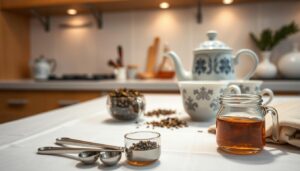Advertisements
Bread Boss: Laboratory-grade precision without leaving home
Bread Boss stands out for its almost surgical approach: each recipe is based on the science of bread and the theory of "baker's percentages." It's the favorite app for those who love to weigh even water with a digital thermometer.
Advertisements
Key Features
– Professional templates: rustic loaf, ciabatta, 100 % whole wheat bread, brioche, bagel and focaccia, all with perfectly scalable weights.
– Variables panel: Adjust hydration, starter inoculation, salt content, and room temperature; the app recalculates kneading times and strength.
– Thermal algorithm: Enter your kitchen temperature and Bread Boss suggests your water temperature to achieve an ideal “final dough temperature” of between 24 and 26°C.
– Multi-bake tracking: You compare statistics on volume, sourdough pH, and rate of rise in each session.
– Photolog mode: You place a photo at each stage (mixing, folding, preforming, shaping, result) and the app generates a collage for your notes or social media.
Advertisements
Strong point
Absolute control. Ideal if you enjoy fine-tuning details to replicate the exact bread from your favorite bakery.
To consider
The learning curve: If you've never heard of "pre-fermented milk" or "Griffin formula," you'll need a bit of an adjustment period, although the help section is very comprehensive.
DoughLab: The Smart Fermentation Lab
DoughLab was born as a project of scientific bakers and maintains the philosophy of merging data, sensors, and artisanal bread. Its modern interface allows the app to be linked with Bluetooth thermometers and smart scales.
Distinctive features
– Protein profile of flour: You choose between weak, medium or strong flour and the algorithm adjusts mechanical kneading vs. manual folding.
– Fermentation model: View the estimated CO₂ curve within the dough in real time; the app suggests when to refrigerate, heat, or proceed with shaping.
– Virtual Tutor: 4K videos narrated by professional bakers demonstrating techniques such as slap & fold and cross-stacking.
– Live sourdough module: Remember when to feed your starter, predict its peak activity, and calibrate how much inoculation you need for the next day's recipe.
– Connection with Google Sheets: Export your log for advanced analysis or to share experiments in home baking communities.
Strong point
Sensor-app-recipe integration. If you have a digital thermometer, the app automatically adjusts the cooking times when it detects that the dough has risen above 26°C.
To consider
The price of premium features (sensor pairing, acidity analysis) can be steep for those who bake only on weekends.


Kitchen Stories: Visual Inspiration for Beginners
Although not exclusively dedicated to bakery products, Kitchen Stories includes a robust bread, pastry, and pizza section. Its target audience is the home cook who appreciates step-by-step photography and simplicity.
Main tools
– Recipes with HD photos for each phase: mixing, kneading, resting, baking.
– Short videos of basic techniques such as “French kneading” or “bun forming”.
– Shopping list integrated: you mark the recipe and the app adds ingredients to your virtual shopping cart.
– Scaling of rations: Doubling a loaf or preparing half a recipe results in automatic weights.
– Active community: Users share tips (e.g., replacing sugar with honey, adding seeds) and rate results with stars.
Strong point
Ease: ideal for the first loaf or for those who want variety without technical details.
To consider
It lacks advanced tracking and calculation tools; if you're looking to play with the 80 %'s hydration, you'll need to supplement with external calculators.
Detailed steps for perfect artisan bread with your app
Selecting flour and understanding protein
Gluten is formed from proteins; a 13 % flour creates a strong network, suitable for alveolated loaves. Bread Boss and DoughLab include charts by brand and origin; enter the correct percentage to have the app adjust water and kneading.
Controlled autolysis
After mixing flour and water, let it rest for 30 minutes; the app will notify you. This step hydrates the starch granules and begins to form gluten with minimal manipulation, which will improve extensibility.
Kneading or folding
Depending on hydration, your app will suggest intensive kneading (French method) or folding every 30 minutes (coil fold). Activate notifications: each fold aligns the gluten chains and traps more CO₂.
Block fermentation
The apps show a growth chart. If the dough rises 50 %, it's time to pre-shape. DoughLab, with sensors, can adjust this point almost to the exact minute.
Rounding and resting
Creating a taut surface helps the loaf maintain its structure. Follow the slow-motion videos offered by the apps; repeat the movement until you master it.
Shaggy
A deep, decisive cut allows the crust to open in a controlled manner. Set your timer 30 minutes in advance to preheat the oven using the stone and steam tray.
Steam Baked
Pour water into the bottom tray when you put the dough in; the steam slows the crust and promotes volume. Some apps will remind you to remove the tray halfway through baking for optimal toasting.
Chilled and tasting
Let it cool for at least an hour: the crumb will finish setting and prevent the inside from becoming chewy. Upload a photo to your app's community: the irregular holes and caramelized crust will be your best selling point.




